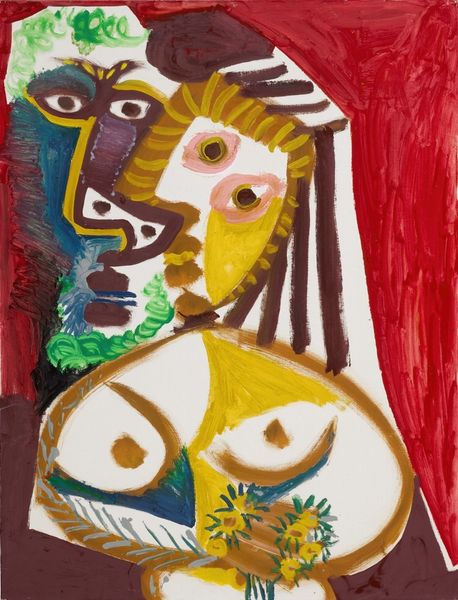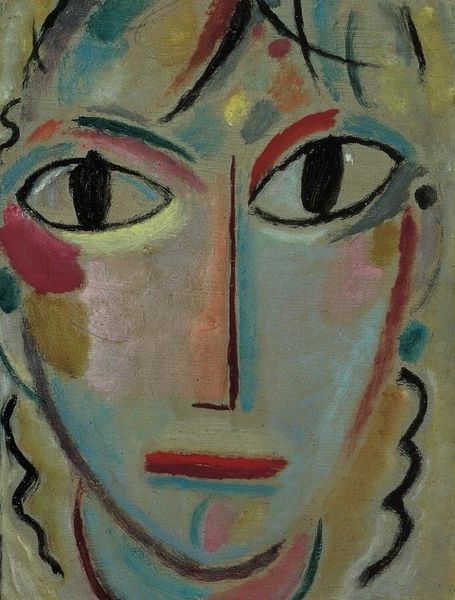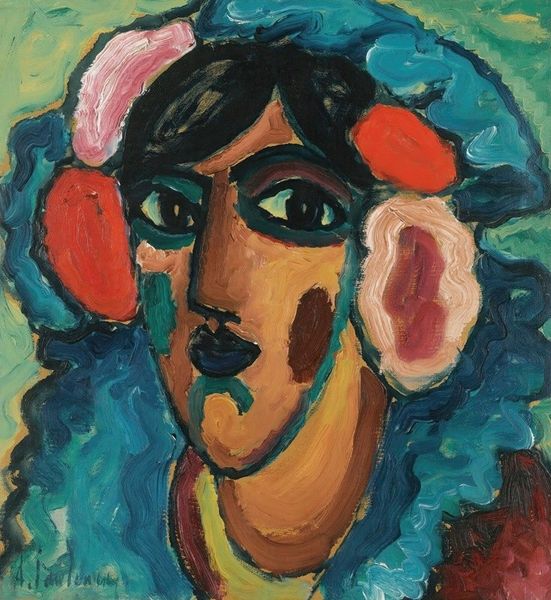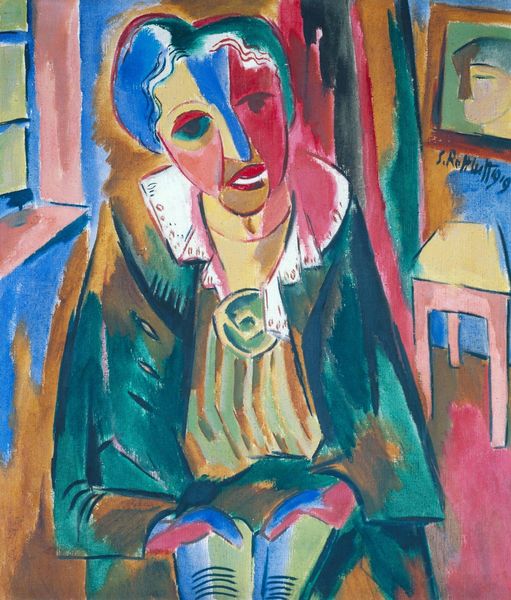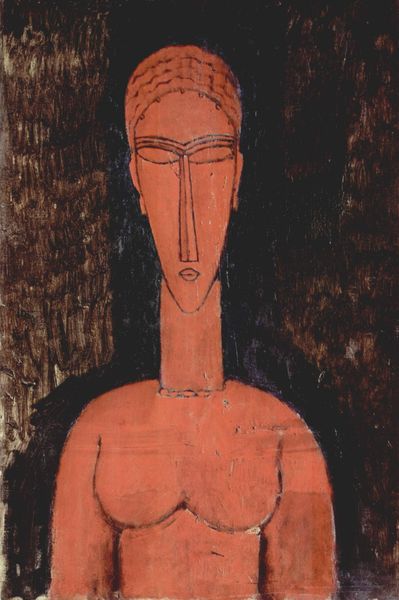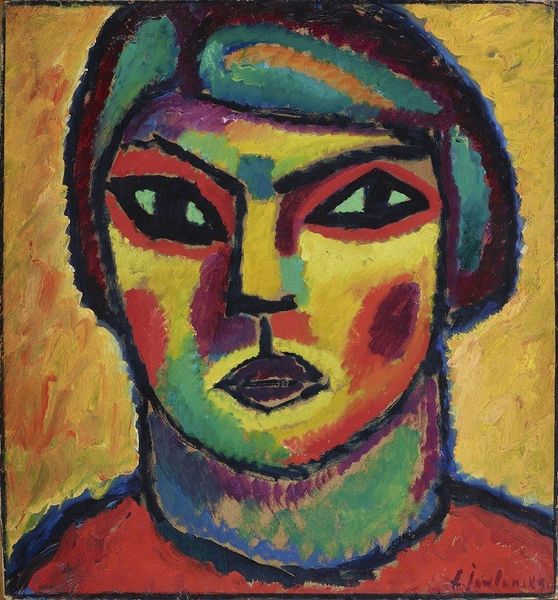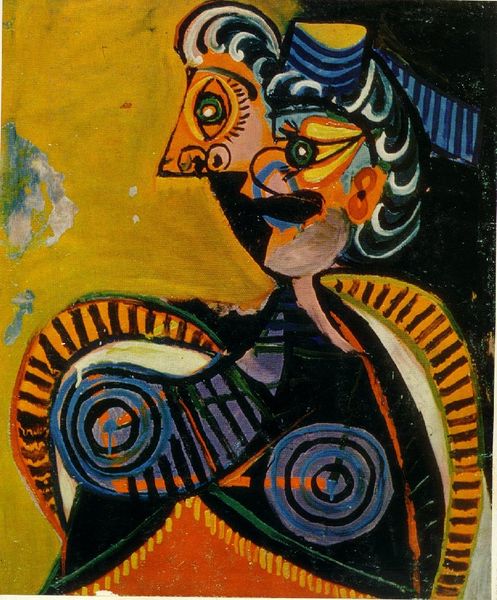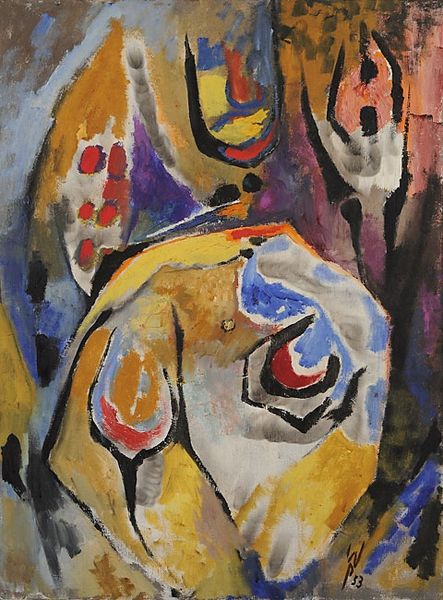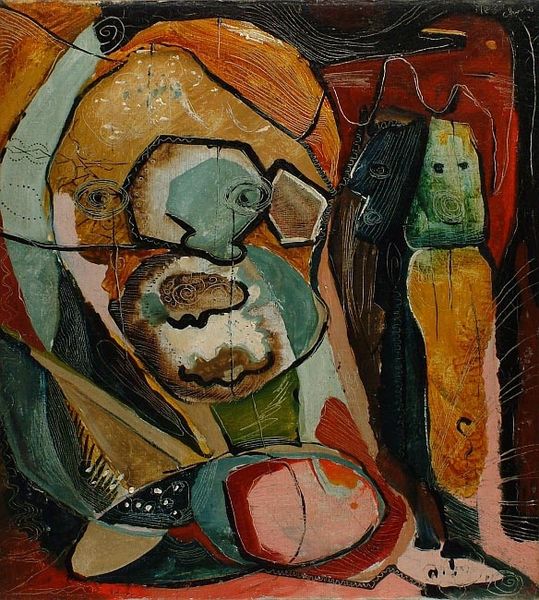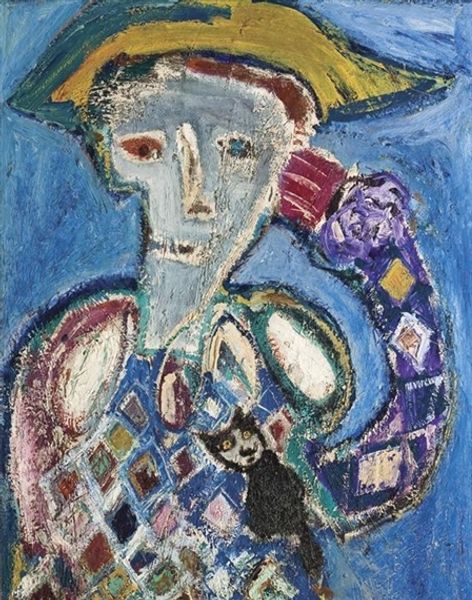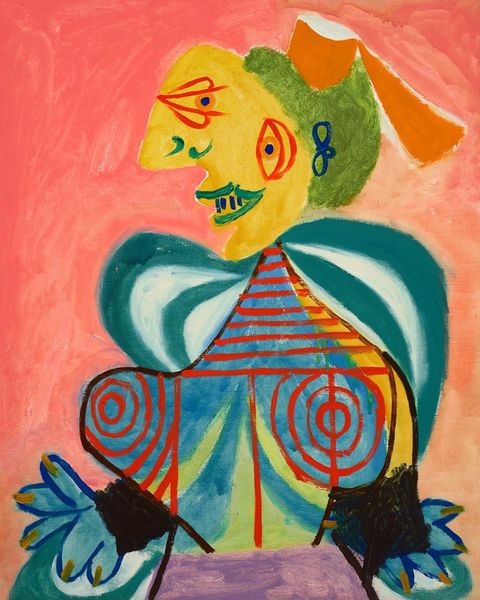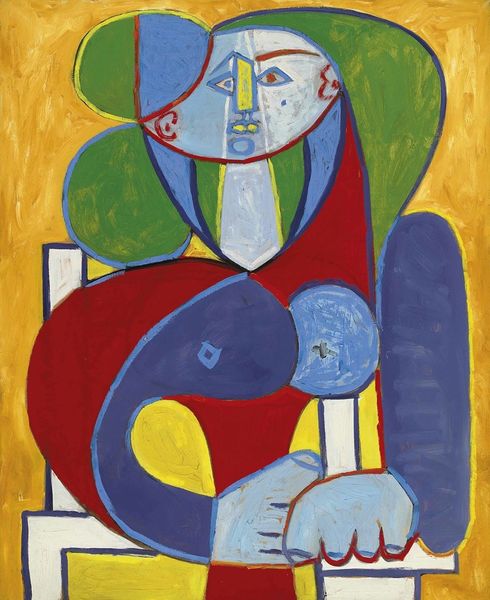
Dimensions: support: 756 x 635 mm frame: 829 x 750 x 48 mm
Copyright: © The estate of Duncan Grant | CC-BY-NC-ND 4.0 DEED, Photo: Tate
Curator: Duncan Grant's "Head of Eve," currently held at Tate Britain, presents a compelling, if somewhat unsettling, depiction of the biblical figure. Editor: Unsettling is right! The ochre palette feels almost feverish, and the raw brushstrokes definitely contribute to a mood of unease. What about the materials? It looks like a thick impasto. Curator: Yes, Grant's use of bold colors and simplified forms pulls from Primitivism, evoking a sense of ancient, almost archetypal womanhood. The figure seems to be emerging from the canvas. Editor: I’m also drawn to the texture; the thickness of the paint emphasizes the physical act of creation itself. It's a tactile experience even from a distance. Were these deliberate choices? Curator: Precisely. The figure of Eve, through Grant’s lens, embodies not just temptation and downfall, but also a primal, creative energy. The face appears mask-like, hinting at universal narratives. Editor: Ultimately, it’s the materiality that resonates most. The painting's surface becomes a record of the artist’s hand and the weight of the cultural symbol. Curator: I agree, and the symbolic weight of Eve is a fascinating element to consider with this intriguing piece. Editor: Definitely something to ponder as we move on.
Comments
tatebritain 6 months ago
⋮
http://www.tate.org.uk/art/artworks/grant-head-of-eve-t03847
Join the conversation
Join millions of artists and users on Artera today and experience the ultimate creative platform.
tatebritain 6 months ago
⋮
Grant liked to fuse many different stylistic influences in his work, and he was particularly interested in the invigorating example of non-Western art forms. The mask-like face and symmetrical pose of Head of Eve suggests a sensual Eden by drawing on Byzantine mosaics as well as the wooden masks of the African Fang tribe. There is also a more contemporary stylistic debt to Picasso. The simplified form and intense colour lend a sense of commanding immediacy. Gallery label, February 2010
